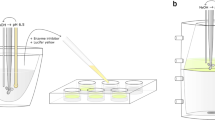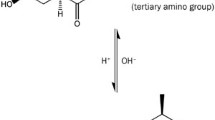ABSTRACT
Purpose
Evaluate the impact of luminal micellar phase on passive permeability of five lipophilic (1.9 ≤ clogP ≤ 9.0) small molecules using biorelevant media and evaluate the impact of luminal coarse lipid particles on danazol permeability after oral administration of a triglyceride solution to fed adults using PAMPA.
Methods
Permeability of carbamazepine, furosemide, danazol, and Compound A was evaluated using Prisma™ HT, FaSSIF-V2, and FeSSIF-V2 in the donor compartment. Compound B could not be tested using Prisma™ HT, due to negligible solubility. Individual intestinal aspirates collected after administration of danazol solution in the olive oil portion of a meal and corresponding micellar phases were subjected to PAMPA. Commercially available Acceptor Sink Buffer was used in all cases.
Results
Unlike with furosemide (under constant pH) and Compound B, permeability of carbamazepine, danazol, and Compound A steadily decreased in the presence of increasing micelle concentration of media. Danazol permeability from aspirates was reduced compared to that from micellar phases; fluxes were similar.
Conclusions
Using PAMPA, the impact of luminal micellar phase on passive permeability of lipophilic molecules varies with the molecule. After administration of a triglyceride solution of danazol, high danazol concentrations in coarse lipid particles balance in terms of drug flux the reduced permeability.

Estimating Papp using PAMPA, intestinal fluids, and simulated intestinal fluids



Similar content being viewed by others
REFERENCES
Westergaard H, Dietschy JM. The mechanism whereby bile acid micelles increase the rate of fatty acid and cholesterol uptake into the intestinal mucosal cell. J Clin Invest. 1976;58:97–108.
Porter CJH, Trevaskis NL, Charman WN. Lipids and lipid-based formulations: optimizing the oral delivery of lipophilic drugs. Nat Rev Drug Discov. 2007;6(3):231–48.
Ingels F, Beck B, Oth M, Augustijns P. Effect of simulated intestinal fluid on drug permeability estimation across Caco-2 monolayers. Int J Pharm. 2004;274:221–32.
Patel N, Forbes B, Eskola S, Murray J. Use of simulated intestinal fluids with Caco-2 cells and rat ileum. Drug Dev Ind Pharm. 2006;32:151–61.
Fossati L, Dechaume R, Hardillier E, Chevillon D, Prevost C, Bolze S, et al. Use of simulated intestinal fluid for Caco-2 permeability assay of lipophilic drugs. Int J Pharm. 2008;360:148–55.
Beig A, Krieg BJ, Carr RA, Borchardt TB, Amidon GE, Amidon GL, et al. The solubility-permeability interplay: mechanistic modeling and predictive application of the impact of micellar solubilization on intestinal permeation. Mol Pharmaceutics. 2011;8(5):1848–56.
Yano K, Masaoka Y, Kataoka M, Sakuma S, Yamashita S. Mechanisms of membrane transport of poorly soluble drugs: role of micelles in oral absorption processes. J Pharm Sci. 2010;99(3):1336–45.
Balimane PV, Han YH, Chong S. Current industrial practices of assessing permeability and P-glycoprotein interaction. AAPS J. 2006;8(1):E1–E13.
Sugano K, Kansy M, Artursson P, Avdeef A, Bendels S, Di L, et al. Coexistence of passive and carrier-mediated processes in drug transport. Nat Rev Drug Discov. 2010;9(8):597–614.
Buckley ST, Frank KJ, Fricker G, Brandl M. Biopharmaceutical classification of poorly soluble drugs with respect to “enabling formulations”. Eur J Pharm Sci. 2013;in press.
Vertzoni M, Markopoulos C, Symillides M, Goumas C, Imanidis G, Reppas C. Luminal lipid phases after administration of a triglyceride solution of danazol in the fed state and their contribution to the flux of danazol across Caco-2 cell monolayers. Mol Pharmaceutics. 2012;9(5):1189–98.
FDA. Guidance for industry, waiver of in vivo bioavailability and bioequivalence studies for immediate-release solid oral dosage forms based on a biopharmaceutics classification system. August 2000. Available from: http://www.fda.gov/downloads/Drugs/GuidanceComplianceRegulatoryInformation/Guidances/UCM070246.pdf.
Jantratid E, Janssen N, Reppas C, Dressman JB. Dissolution media simulating conditions in the proximal human gastrointestinal tract: an update. Pharm Res. 2008;2:1663–76.
Charkoftaki G, Dokoumetzidis A, Valsami G, Macheras P. Supersaturated dissolution data and their interpretation: the TPGS-carbamazepine model case. J Pharm Pharmacol. 2011;63(3):352–61.
Millipore. Membrane integrity test for lipid-PAMPA artificial membranes. 2005 January. Available from: http://www.millipore.com/publications.nsf/a73664f9f981af8c852569b9005b4eee/2147fb6da40eb49885256fb8007456fd/$FILE/PC1545EN00.pdf.
Lennernäs H. Human intestinal permeability. J Pharm Sci. 1998;87(4):403–10.
Avdeef A. The rise of PAMPA. Expert Opin Drug Metab Toxicol. 2005;1:325–42.
Müllertz A, Fatouros DG, Smith JR, Vertzoni M, Reppas C. Insights into intermediate phases of human intestinal fluids visualised by atomic force microscopy and cryo -transmission electron microscopy ex vivo. Mol Pharmaceutics. 2012;9:237–47.
Avdeef A. Absorption and drug development—solubility, permeability, and charge state. New Jersey: John Wiley & Sons; 2003.
Sunesen VH, Vedelsdal R, Kristensen HG, Christrup L, Müllertz A. Effect of liquid volume and food intake on the absolute bioavailability of danazol, a poorly soluble drug. Eur J Pharm Sci. 2005;24(4):297–303.
Shin SC, Kim J. Physicochemical characterization of solid dispersion of furosemide with TPGS. Int J Pharm. 2003;251(1–2):79–84.
Miller JC, Miller JN. Statistics for analytical chemistry. New York: Wiley; 1984.
ACKNOWLEDGMENTS AND DISCLOSURES
Parts of this manuscript have been presented at AAPS Αnnual Μeeting (Chicago, 2012), at the First Greek Congress of Pharmaceutical Sciences (Athens, 2012), and at the 15th Hellenic Symposium on Medicinal Chemistry (Athens, 2012). Partial financial support by the State Scholarships Foundation, Greece, and the Federal Commission for Scholarships for Foreign Students (ESKAS), Switzerland, is greatly appreciated. The authors would like to thank Dr N. Aligiannis and Ms E. Chaita, Department of Pharmacognosy and Chemistry of Natural Products, Faculty of Pharmacy, National and Kapodistrian University of Athens for their help with the plate readings.
Author information
Authors and Affiliations
Corresponding author
Rights and permissions
About this article
Cite this article
Markopoulos, C., Imanidis, G., Vertzoni, M. et al. In Vitro and Ex Vivo Investigation of the Impact of Luminal Lipid Phases on Passive Permeability of Lipophilic Small Molecules Using PAMPA. Pharm Res 30, 3145–3153 (2013). https://doi.org/10.1007/s11095-013-1141-1
Received:
Accepted:
Published:
Issue Date:
DOI: https://doi.org/10.1007/s11095-013-1141-1




